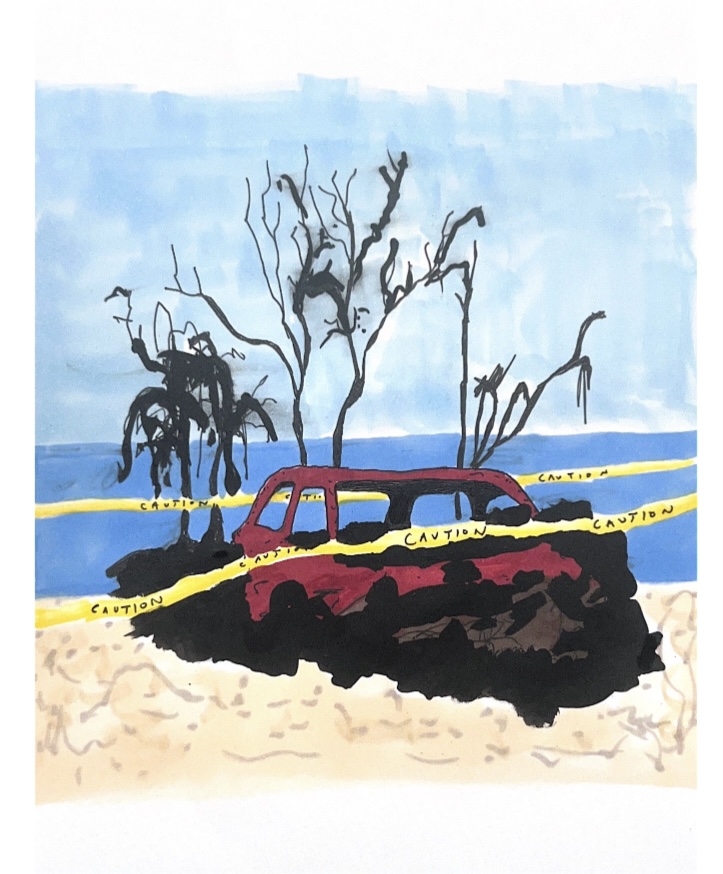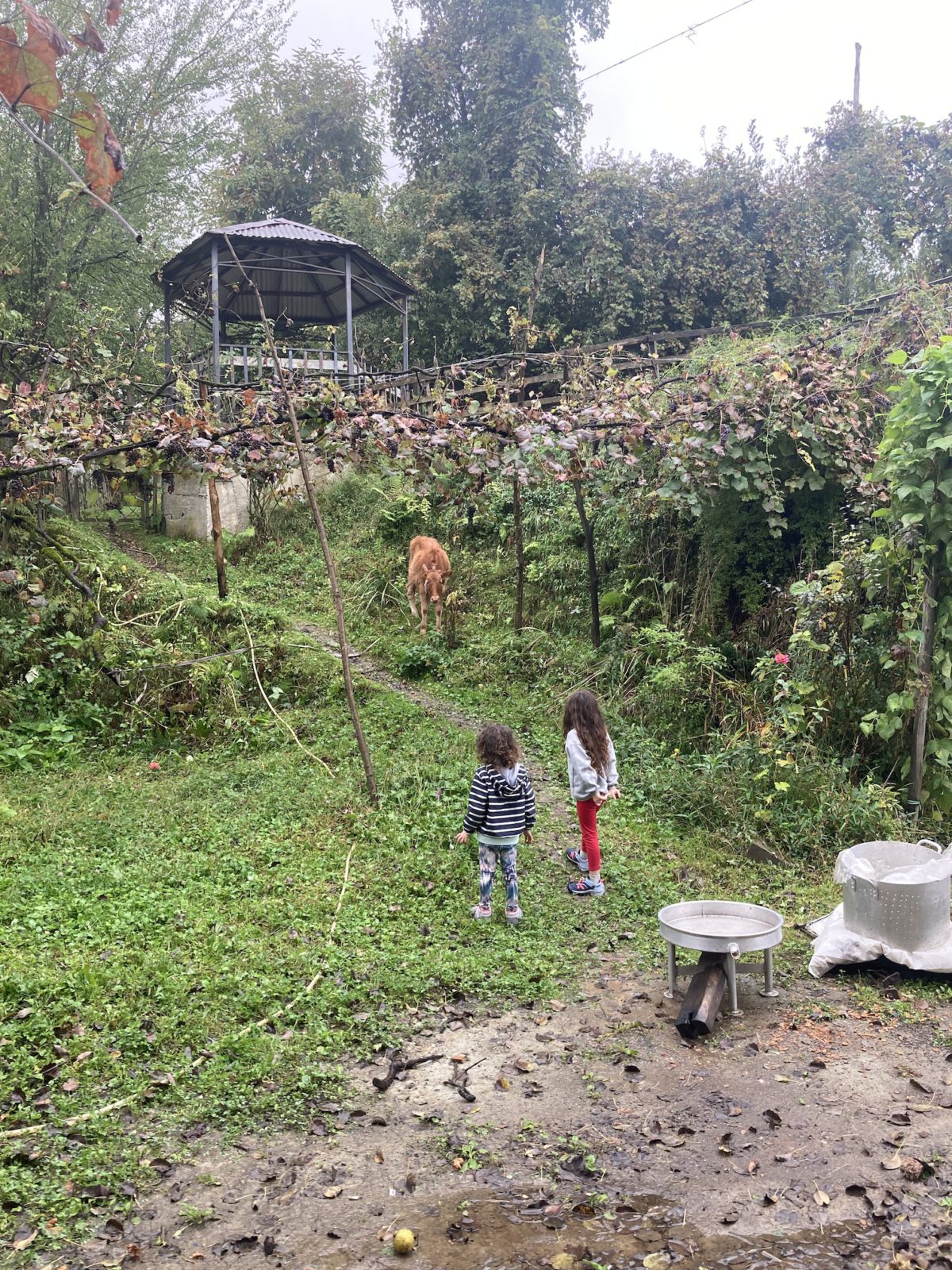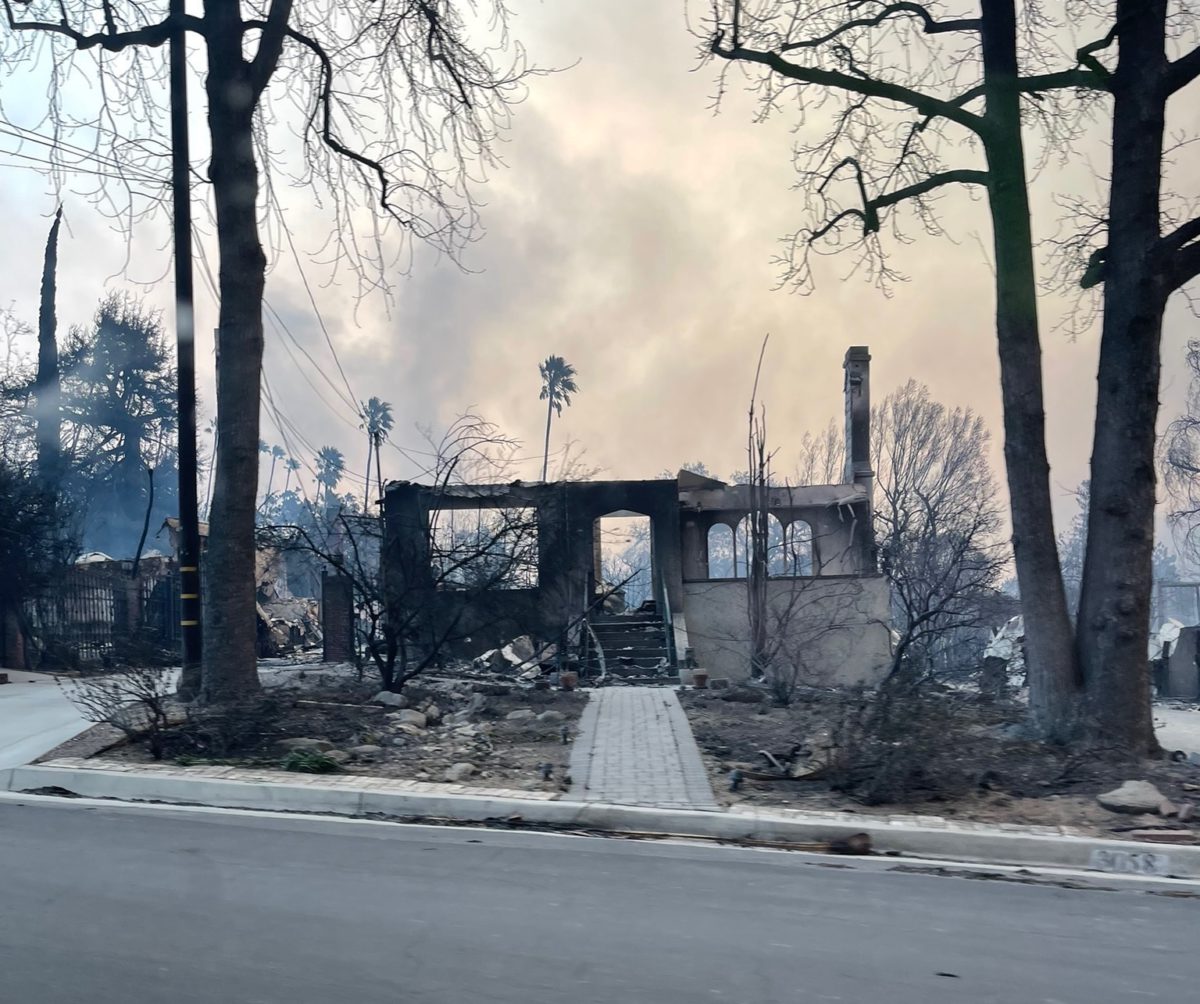Observations on Folsom Lake, Drought, and Dams
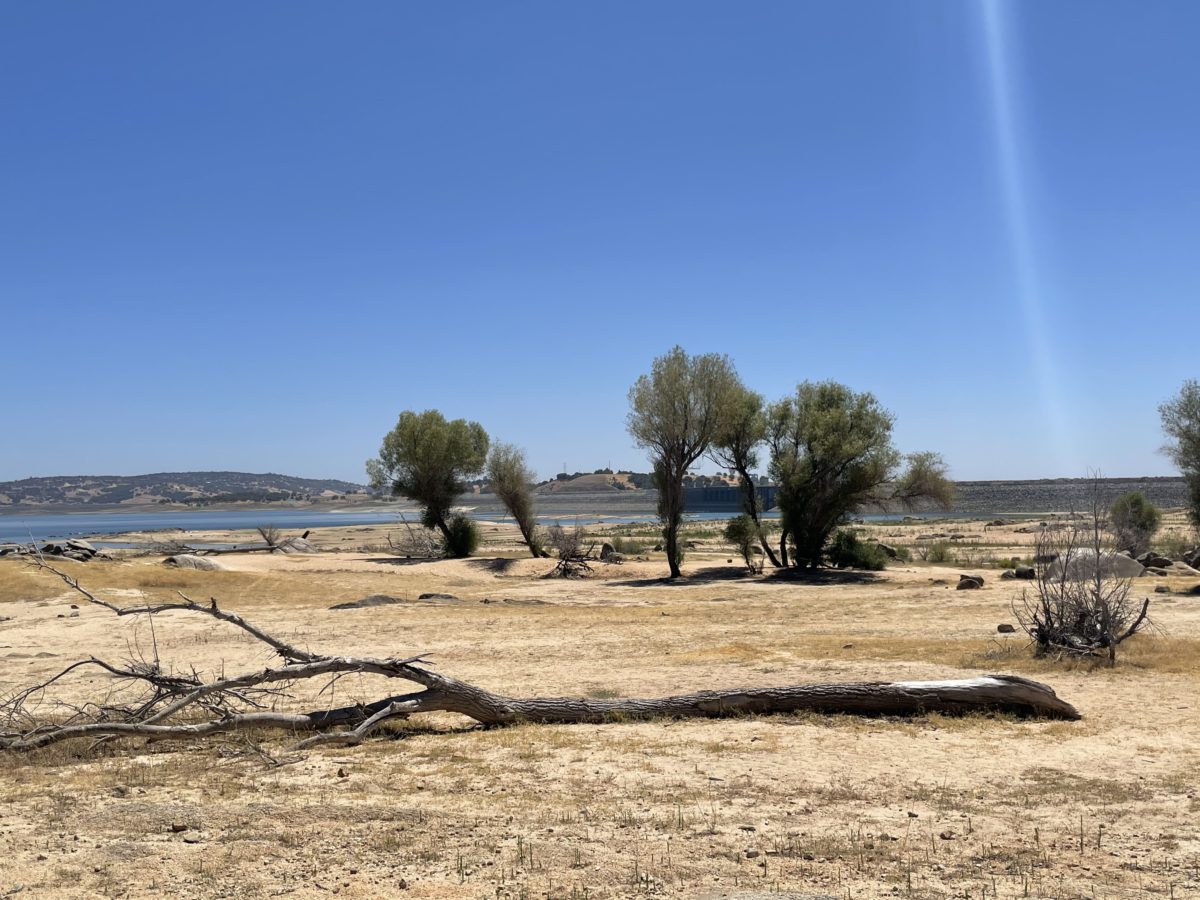
Folsom Lake was built at the confluence of the north and middle forks of the American River in the 1950s. Since then, it has functioned as a tool for flood mitigation, hydroelectricity, and recreation. It was to be a place of suburban luxury to the east of Sacramento, a haven from the heavy heat of a central valley summer. Today, Folsom Lake is at its lowest since its creation, with boaters no longer allowed on the reservoir due to the water level.
This summer, I stepped out of my car into the soft breeze, scanning the bright horizon of Beal’s Point at Folsom Lake. A couple cars were parked in small pockets of shade beside young sycamores. Few people walked on the cement path coated in the midday sun. A family sat on top of a picnic bench, enjoying a small patch of shade on the green irrigated lawn. As I walked the cement path, I saw two large lifeguard posts standing in front of a dry and long meadow. I imagined what this inlet must’ve looked like in other years—the water high to the shore, kids playing in the shallows as others sunbathed. But the water was gone, the land renewed into an open expanse of sand, grasses, and shrubs growing in place of the once submerged land. Beyond the meadow and open rock-beds surrounded by plants clinging to dry earth, I saw, far in the distance, the patchwork of islands made in the depleting reservoir that is Folsom Lake. I was looking at a man-made pool, returning to rock and grass, becoming, once again, two forks of the American River.
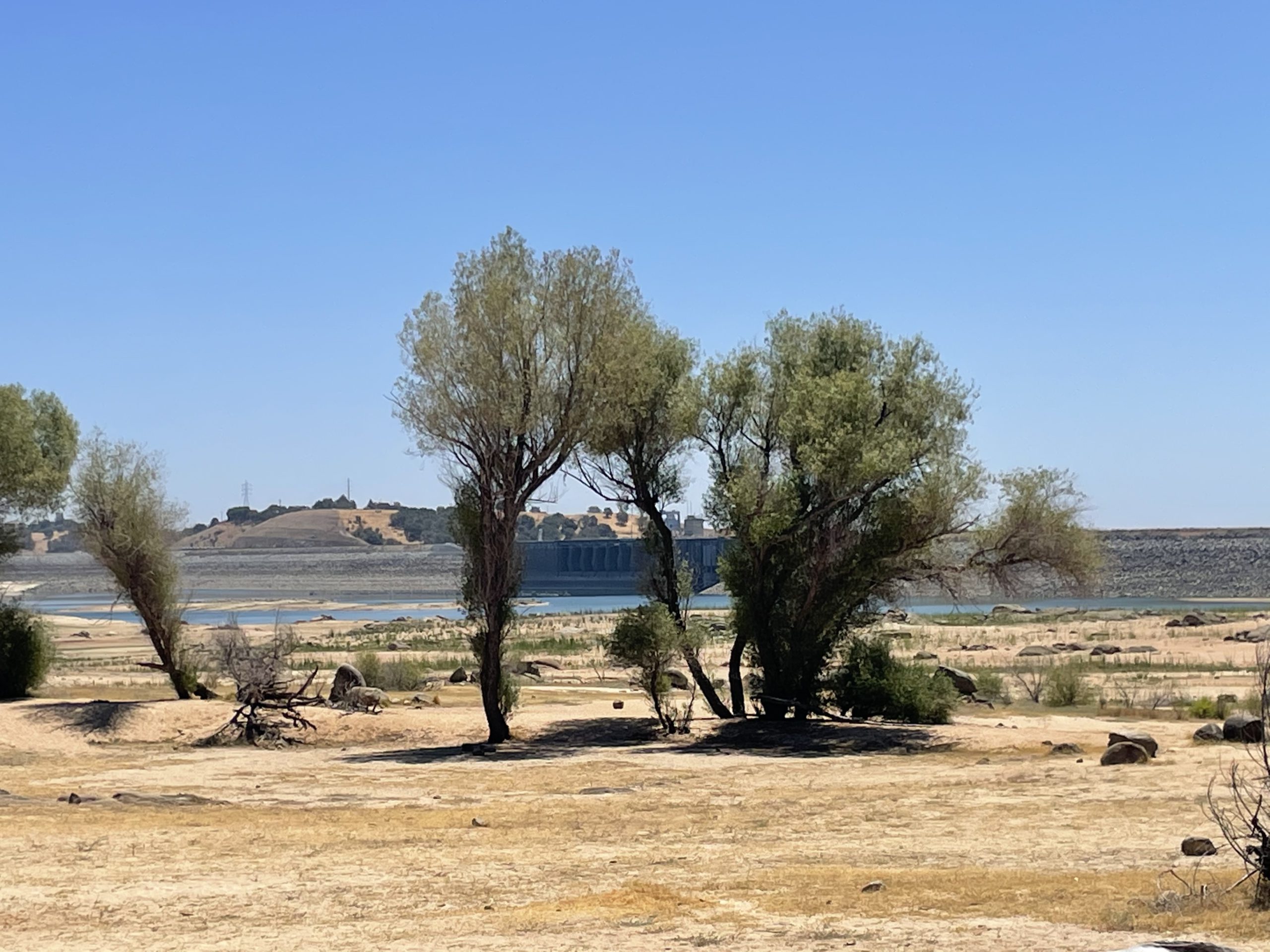
Dams are monumentally tragic in the minds of conservationists. In the building of a dam, entire habitats and ecosystems disappear under its hold. As John McPhee writes in Encounters with the Archdruid (his book about the prominent conservationist David Brower), a dam is a “disproportionately and metaphysically sinister” problem for conservationists. “The conservation movement is a mystical and religious force,” McPhee writes, “and possibly the reaction to dams is so violent because rivers are the ultimate metaphors of existence, and dams destroy rivers. Humiliating nature, a dam is evil—placed and solid.”
These landscapes seem destined to return to what they were before central California was transformed into, what conservationists might call, drowned cathedrals.
On the utilitarian side, however, these dams have enabled fruitful farming in many areas of the country. The Bureau of Reclamation, signed into being by Theodore Roosevelt in 1902, helped create dams in order to provide more water to settlements in the American West. Today, the dams built under this department have become essential for the lives of millions. In California, for example, eighty-two percent of water used by the public comes from reservoirs, rivers, and other surface water stores across the state.
Nevertheless, due to climate change, the lands beneath these reservoirs are returning to the surface. Dams in California are becoming barren walls, holding back what little water remains in the midst of one of the worst droughts in history. These landscapes seem destined to return to what they were before central California was transformed into, what conservationists might call, drowned cathedrals.
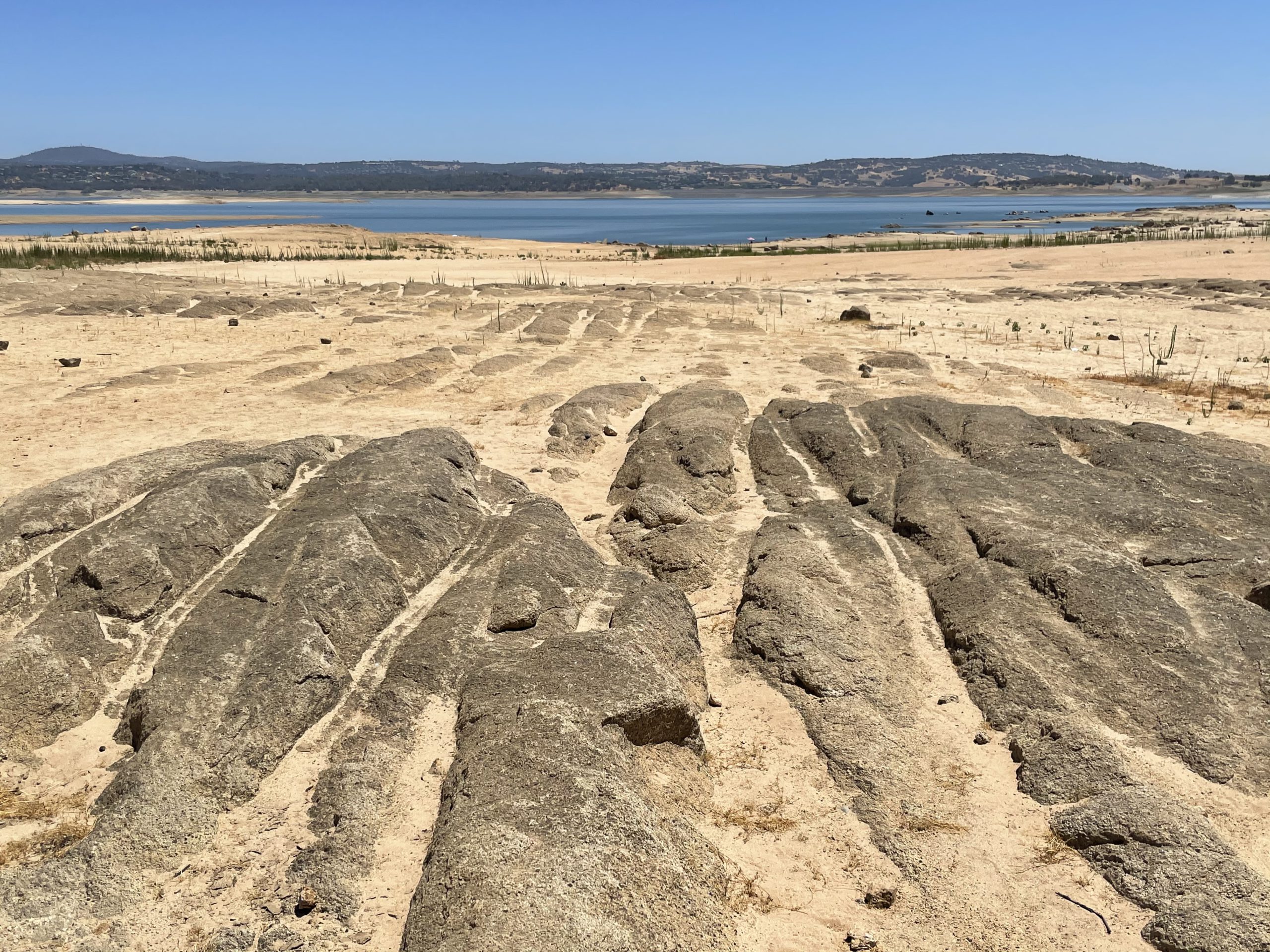
Before Folsom Lake was constructed, there was a small community called Mormon Island living by the shores of the American River. Before Mormon Island, these shores were fertile land for many indigenous peoples. The Miwok people to the east, the Patwin, the Wintun, and the Wintu people to the west, all called the river Mokelumne, or Condor River. Today, as the water reaches historical lows, the forgotten foundations of Mormon Island have resurfaced.
This land has been transformed by the flowing of the river, the cultivation of native plants by Miwok and Wintun people, the western colonizers introducing invasive plants, federal interests attempting to create more sustainable energy systems and water storage in dry lands, and, by the climate crisis. Yet ecologically, change should be thought of as a constant. The only thing that seems to matter today is how we decide to move with that change: to keep the dams; to build more and preserve whatever water is left in the drying West as Floyd Dominy, the man who commissioned Lake Powell, might have done; or to monkey wrench them all, letting the water run to the Pacific as in the dreams of Edward Abbey.
I decided to walk further into the lake bed, seeing two bright parasols beside the distant lake shore. I could see the water in the rocks, curling currents over decades carving slowly through the bedrock, solid earth worn into sand and dust. Thick coyote bushes made their claim on the dry soil bed, clinging to the earth. Small grass-like plants with thick casings—perhaps evolved not to lose water in the heat—had returned. Boulders protruded like the thumbs of giants from the ground. I could see the markings of water everywhere on the land. But the water wasn’t there.

